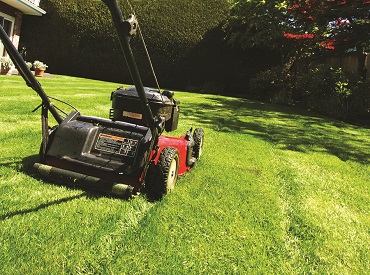6 Tips To Save Your Dying Lawn
2020.08.11
If you are a homeowner, one of the last things you want to see is patches of dead grass. Unfortunately, when one area starts to die, it's not long before other areas of your yard start to die as well. If you stand back and do nothing, you'll soon have a lawn that has completely wasted away. Rather than let this happen, it is important you become very proactive and use a variety of techniques and strategies to revive your lawn and bring it back to life. If you are in need of some ways to do so, here are six tips you're sure to find useful.

Pest Control
You may not know this, but there are many types of insects that can severely damage your yard. Among the most common culprits are grubs, cutworms, and armyworms, which sound quite ominous. If you see yellow patches of dead grass on your lawn, you've got a bug problem. Therefore, use an aggressive pest control program that includes environmentally-friendly insecticides.
Start a Lawn Care Routine
To combat a dying lawn, establish a regular lawn care routine that includes mowing, trimming, and fertilizing your yard. By doing so, you'll stop lawn diseases before they get a stranglehold on your grass. However, since this is something you will need to do regularly to maintain your lawn's health, make sure your routine is one you can stick to week-to-week. If you are too busy to do this, it's probably best for you to hire a lawn care service to do the job for you.
Water Your Lawn Regularly
If you live in an area that is prone to drought, failing to water your lawn regularly will almost certainly result in a dying lawn. If you don't want this to happen, plan on pulling out your garden hose on a regular basis and give your grass a much-needed drink of water. For most lawns to stay healthy, they should have one inch of water per week, which is usually done through rainfall. However, if you hit a dry period, you'll need to give your lawn at least one-half inch of water every two weeks for it to get through the drought in good condition.
Invest in a Soil Test
While you can purchase kits to test the soil yourself, it is usually best if you let professionals assess your lawn to determine if the problem you are having is your soil. Once you've had your soil tested, you can then get suggestions from lawn care professionals on how to make adjustments to caring for your lawn, such as what types of fertilizer work best and how often it should be applied.
Remove Excess Weeds and Thatch
If you have a large amount of weeds and thatch in your yard, you will almost certainly have a lawn that is dying. Therefore, you'll need to get busy removing the excess weeds and thatch from your lawn if you want your grass to stand any chance of surviving. Whether you pull everything up by hand or use a safe and effective herbicide, it will be well worth the effort. Once the weeds and thatch are gone, the new turf that will come up in its place will do so very quickly and likely be very healthy.
Aerate Your Grass
If you want your lawn to be able to absorb the nutrients it needs to survive, you'll need to aerate your grass on a regular basis. Since your lawn may have a shortage of air due to thatch, thick grass, and soil that has become very compacted, you'll need to literally punch holes in your lawn. To do so, you can purchase an aerator and do it yourself, or let professional lawn care specialists do the job.
By keeping these tips in mind and putting them to good use, your lawn will soon look as beautiful as in years past.
More Articles
Copyright © Fooyoh.com All rights reserved.